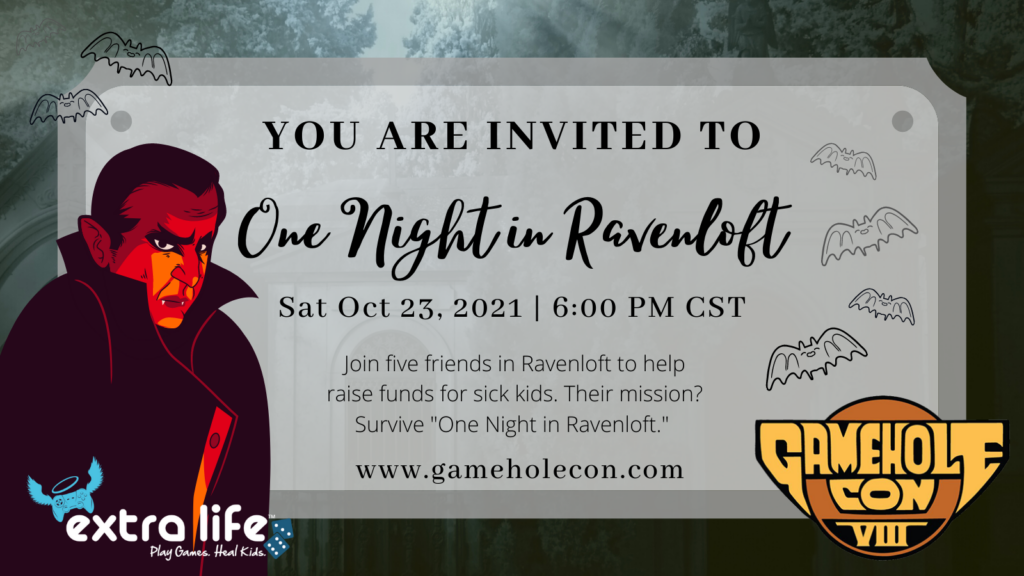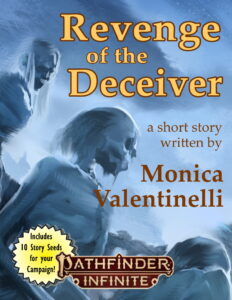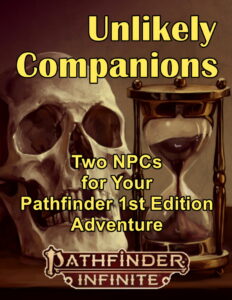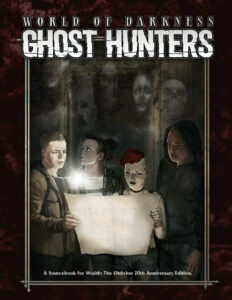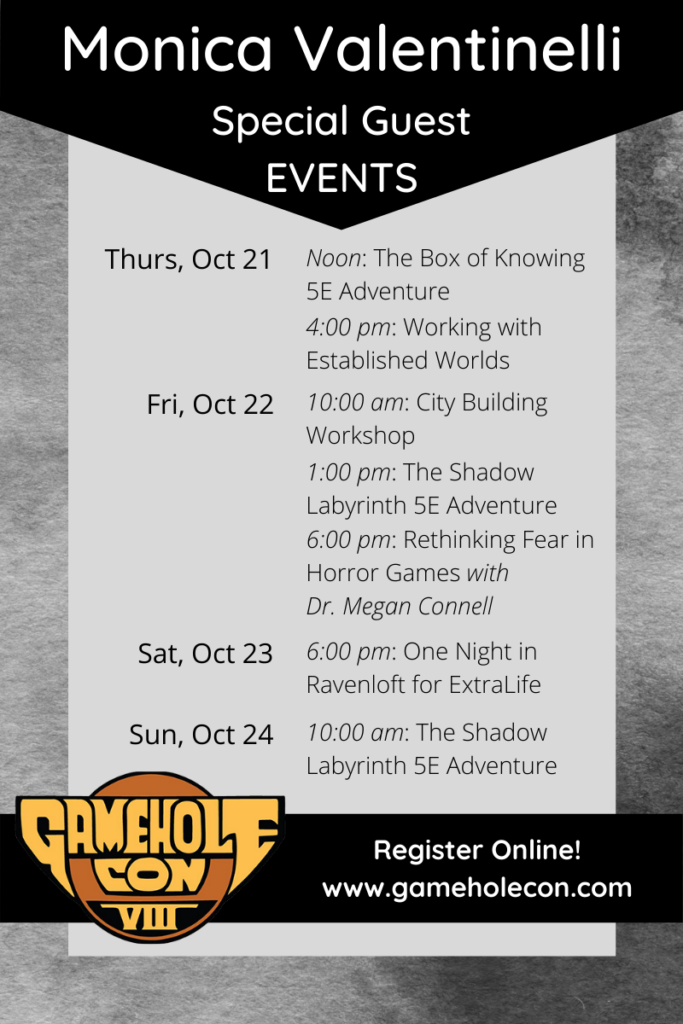It’s the Monday after GameHole Con and the week of Halloween. I had a fantastic time and am grateful to have been part of the show as a special guest. Said I wasn’t going to write the day after the show, but I lied. I realized that I wanted to tell you the story behind why I proposed the Rethinking Fear in Horror Games Interview with Doctor Megan at the show for two reasons: One, MeganPsyD (on Twitter) recorded it, and I’d really, really be grateful if you’ll reshare it when it goes live and two, because the long, sordid backstory isn’t appropriate to share with you when the literal star of this interview is Doctor Megan Connell.
All right… So, one of the many work-related tasks I did during the pandemic was to review all the creative projects I wanted to do but never produced. I think I told you this before, but as a transmedia storyteller I love to develop stories in different mediums to tap into the gifts they bring. Working on IP as a game designer was a great push toward that, because I had the pleasure of being able to study the IPs I was working on in different media forms.
But for all those benefits, working on IPs isn’t “my” work. My IPs. Somewhere along the way, I started recognizing I had limited resources to do what I wanted to do. I addressed this in a previous newsletter, but this was one of the reasons why I developed a scarcity mindset. And, look I am really great at project management to usher projects out into the world with the resources I do have available, but at the same time I have always been a high creative and would much, much rather do that.
So, there I was reminding myself that yes, I have always known what I wanted to do. In fact, here’s a pile of projects I remembered stalled because I needed help to produce them. In the past, I have asked for help. I have a gut-wrenching-to-me cyberpunk story, for example, that primarily works as a movie or graphic novel because of the gifts an actor can bring, but also because the use of color is actually part of the story. [Not just a concept, mind you. I do have materials for this.] Okay, so how do I produce this thing? Write a screenplay, right? Sell it? Win the lottery? Yeah, you see where I’m going with this. Mind you, I did place as a co-write in a screenwriting contest and had a door open for a hot minute, but nothing ever came of that. The real reason I didn’t write the screenplay is because I made a choice not to. I have limited resources and, other than paying money to enter screenplay contests and hoping for the best, it’d be challenging for me in my current position to make the connections necessary for a green light. I also spent a solid five-to-six years pitching and getting to know people at comic book conventions because I secretly wanted to do this story, and wanted to work on other comics first to build of my resume, but have since given up.
Both times, I got a lot of advice to form a path of produced works to increase the chances of my projects getting made. My barrier? Again. Resources. Sure, I could self-publish, but that seems to be the default answer every time. It still costs to self-publish. Time is just one of those costs! My personal art isn’t great enough to pursue it; and I cannot, and will not, find an artist to collaborate with unless I pay pro rates. Laughably, what do you do when you do have a resume but it’s either too long or not long enough?
I have no idea. But, I am lucky I have had friends and folks I’ve thought of as mentors who’ve guided me to an important realization: Keep an open mind and do what I can, because the work is for me even if I enjoy entertaining people. I am so incredibly sad to tell you many of them are no longer with me, but I got here—in this creative space where F-bomb it I’m going to do what I can and hope for the best—because of them. Because of my late Shakespeare professor who not only taught me how to appreciate and write for multiple audiences at the same time, but recognized I was a better fit for film. Because of my late friend who made peace with his own role in publishing and his success after talking to so many other creative professionals in the exact same space I am. Because of several friends of color who have had the patience to help me recognize my own privilege (while recognizing there are still challenges as an aging, female creative) and how I can help lift others and build community. Because of one particular black friend (you know who you are and you are AMAZING) who proverbially held my hand for many years, both before, during, and after a tumultuous time in both gaming and science fiction and fantasy to remind me of my own power. Because of the tireless support and the position I put my loved ones, my friends and peers, my writing group, even former publishers in. Because of the lessons I learned after meeting two of my literary heroes, where one crushed my heart to the point where I never thought I’d recover, and the other extended compassion and friendship.
And now, because of Doctor Megan. The project that I am working on with Doctor Megan is a Ravenloft 5th Edition campaign for DMsGuild.com. This is a set of releases that wouldn’t be possible without Megan’s expertise as a professional psychologist and her deep, deep love of Dungeons & Dragons.
As a former World of Darkness writer myself, I have always felt the horror genre contributes narrative potential to explore our shadows. Philosophically, I believe that shadows and light are crucial components of the human existence and, to a larger extent, the stories we tell. But, I also recognize there are a lot of problematic tropes that I wanted (and have to various ends throughout my career) to work through in the hopes it’ll make the story better, my anxiety notwithstanding. (The concept behind my Apex Book Company anthology Upside Down: Inverted Tropes in Storytelling was inspired by this!)
As before: I didn’t write this campaign, because I was missing something. I knew I was missing an important thematic piece that could, quite frankly, only come from someone who understood what horror was from an actual psychologist’s perspective who understood gaming. Then, I got lucky. Megan and I met at GameHole Con a few years ago, became friends, play Ravenloft together, and eventually got to a place where I could ask for her help.
This is now our campaign. We playtested two scenarios at this show and got amazing feedback. Now it’s a matter of, again, figuring out my resources. I have to prioritize my deadline-centric work, because without a publisher I am fronting the time and costs and friends, I got bills to pay. Then there’s the collaboration with an actual professional who has a day job, loved ones, etc. But, this campaign is a possibility now because this story required collaboration, and it’s all happening thanks to her.
So why THIS interview? Well, because I can’t imagine I am the only writer who’s worked on horror games, who wants to evoke that feeling of fear at the table in a healthy way, who’d be both curious and feel a little less anxious about this heavy genre work after hearing her expertise. Horror game design is hella complicated, yo. And before you freak out… Please know that horror game design from a psychological approach is not always about The Deep StuffTM or massive genre changes—even small tweaks make a world of difference.
I am extremely grateful to Doctor Megan and to GameHole Con for approving this talk. The room was packed, her voice was heard, and with any luck she’ll go on to huge, huge things.
As for me? I really don’t know, but I have a long-ass list and deadlines I need to keep crushing (while seeking out new opportunities). And I’ll keep muddling through all this the best I can. Who knows? Maybe I’ll even find a little more help along the way.
Wouldn’t that be something.


